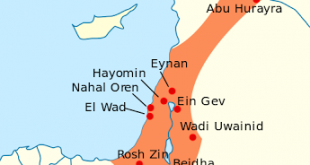The Socialist Party of America existed between the 29th July 1901 and the 31st December 1972. Before the party was repressed for its opposition to World War I and suffered splits over the question of Communist Russia, it was probably the most successful and largest radical party of the socialist Left in America, at least down to the 1920s.The Socialist Party of America was made up of Marxists, anarchists, some members of the Industrial Workers of the World (IWW) union, democratic socialists...
Read More »Marx on the Outsourcing of Manufacturing
There is a brief reference to it in a pamphlet by Karl Marx called “On the Lausanne Congress” published in July 1867: “The power of the human individual has disappeared before the power of capital, in the factory the worker is now nothing but a cog in the machine. In order to recover his individuality, the worker has had to unite together with others and create associations to defend his wages and his life. Until today these associations had remained purely local, while the power of capital,...
Read More »A Documentary on the Natufians and the Origins of Agriculture
Below is a great documentary on the Natufians and the origins of agriculture, right down until the spread of farming into Europe from c. 6,500–4,000 BC as Neolithic Anatolian farmers migrated into Europe.One problem is that this documentary takes the older view that the Younger Dryas (c. 10,800–9,500 BC) drove the Natufians to adopt agriculture proper as a survival strategy. Today, however, many scholars see the Natufians of the Younger Dryas as in a transitional stage that was only moving...
Read More »The Natufians and the Origins of Agriculture in the Ancient Near East
The Natufians were a people in the prehistoric Levant from c. 12,500 to 9,500 BC who developed sedentary or semi-sedentary settlements to exploit wild cereals, and experimented in the early domestication of plants. Their descendants then eventually adopted the first agriculture after the Younger Dryas (c. 10,800–9,500 BC).It is possible that the phenomenon of “plant nurturing” (deliberate actions to increase the reproduction and spread of plants for food) was practised by Pleistocene...
Read More »Malthus, Darwin and Evolution
Thomas Robert Malthus’ An Essay on the Principle of Population was first published in 1798. An influential revised edition followed in 1803, and a sixth edition in 1826. In this work, Malthus mulled over the population, social and economic trends that we now call Malthusianism.Charles Darwin was driven to one of his most important insights into biological evolution by reading Malthus’ An Essay on the Principle of Population in 1838 in the sixth edition, during a terrible depression in...
Read More »Chronology of Human Evolutionary Prehistory and Early History
I have made this chronology to complement my summaries of Gregory Cochran and Henry Harpending’s The 10,000 Year Explosion: How Civilization Accelerated Human Evolution (2009).It covers both human evolutionary prehistory and early history:4 million years ago – emergence of the Australopithecus genus in eastern Africa2.8–1.5 million years ago – time of Homo habilis2.6–1.7 million years ago – Oldowan culture, the earliest stone tool archaeological industry of prehistory, in Africa, South Asia,...
Read More »Gregory Clark’s A Farewell to Alms, Chapter 1: A Summary
Chapter 1 of Gregory Clark’s A Farewell to Alms: A Brief Economic History of the World (2007) is called “The Sixteen-Page Economic History of the World,” which briefly summaries the broad, long-run economic history of humanity.Gregory Clark contends that the most important long-run, historical reality of world history can be summed up in two ideas: (1) from the earliest times of hunter-gatherers until roughly 1800 humanity was stuck in a long-run Malthusian trap: per capita wealth may have...
Read More »My Summaries of The 10,000 Year Explosion
Below are my summaries of Gregory Cochran and Henry Harpending’s The 10,000 Year Explosion: How Civilization Accelerated Human Evolution (2009):(1) “The 10,000 Year Explosion, Chapter 1: A Summary,” July 20, 2017.(2) “The 10,000 Year Explosion, Chapter 2: A Summary,” July 21, 2017.(3) “The 10,000 Year Explosion, Chapter 3: A Summary,” July 22, 2017.(4) “The 10,000 Year Explosion, Chapter 4: A Summary,” July 23, 2017.(5) “The 10,000 Year Explosion, Chapter 5: A Summary,” July 24, 2017.(6)...
Read More »The 10,000 Year Explosion, Conclusion: A Summary
The conclusion of Gregory Cochran and Henry Harpending’s The 10,000 Year Explosion: How Civilization Accelerated Human Evolution (2009) sums up the major hypotheses of the book as follows: (1) genetic change and evolution have been preconditions for cultural change (one clear example being the expansion of hominid brains that led to speech and advanced tool making), even though cultural change is powerful and can be an independent force;(2) genetic evolution and cultural evolution can also...
Read More »The 10,000 Year Explosion, Chapter 7: A Summary
Chapter 7 of Gregory Cochran and Henry Harpending’s The 10,000 Year Explosion: How Civilization Accelerated Human Evolution (2009) is called “Medieval Evolution: How the Ashkenazi Jews got their Smarts,” and looks at the evolution of the Ashkenazi minority within Europe over the past 1,500 years.The chapter is based in part on earlier work in Cochran, Hardy and Harpending (2006). The Ashkenazim were a Diaspora Jewish community that was first based in northern France and Germany in the...
Read More » Socialdem. 21st Century
Socialdem. 21st Century


